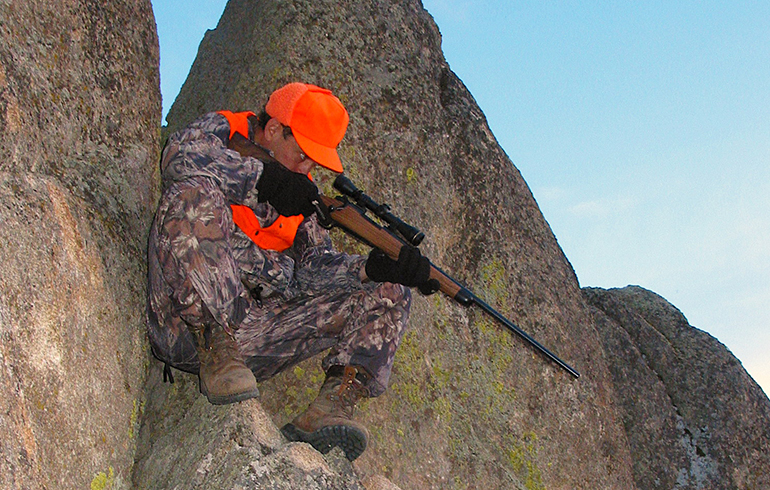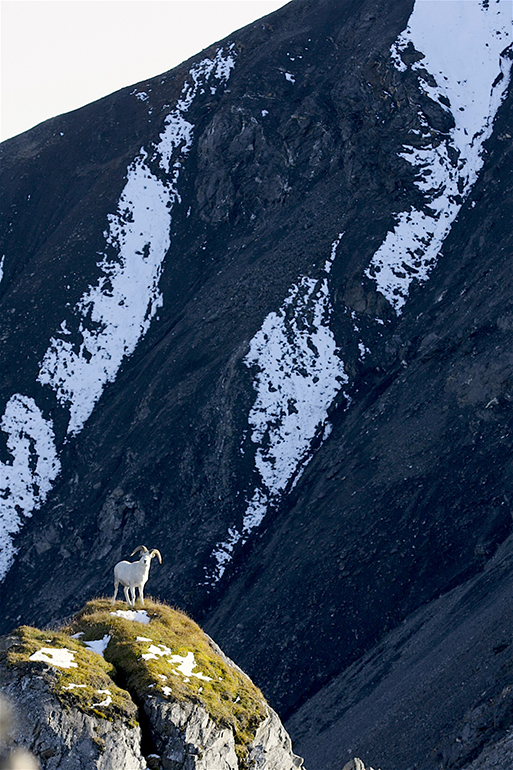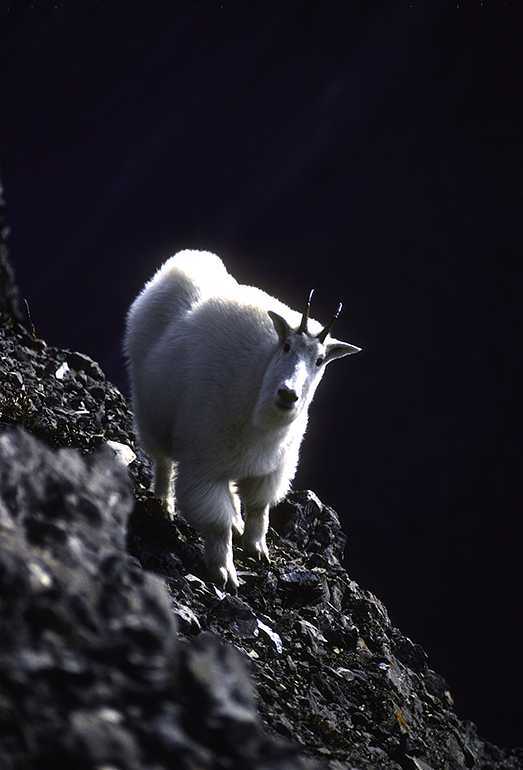If you’re angling for the solution to that perennial uphill/downhill shooting dilemma, keep reading. We have a simple solution.
Most hunters understand that steep shooting angles alter where bullets strike. If your rig is zeroed at 200 yards on the level and your target stands 200 yards up a steep mountain slope, your bullet will strike lower than usual, right? And if its below you, you’ll shoot high? No? Well, at least half no.

The odd truth is that your bullets will strike higher than normal shooting downhill AND uphill. The up and down part makes no difference. Only the angle matters. The steeper the angle and the more distant the target, the higher your bullets will strike from their horizontal trajectory curve.

I know. This sounds crazy. But it’s a fact. It’s not the downhill acceleration of gravity nor the uphill drag of gravity that makes the difference: it’s the trigonometry of the changed flight path.
If you’re like me, you see the word trigonometry and you either go comatose like a possum or run screaming from the room. But toughen up and bear with me and we’ll sneak around this trig problem.
The “common sense” way to think about the up/down angle thing is to remember from which direction gravity pulls. It’s not at a right angle from the surface of the ground. It’s in a straight line from the center of the Earth. You instinctively know this when you’re shooting over a flat field. Gravity pulls your bullet at a 90-degree or right angle to its line of departure. And that’s when it has its maximum effect on trajectory.
For your next thought exercise, recall how you maintain balance on a steep slope. It’s not the same as on a flat field, is it? If you stand against a cliff, gravity doesn’t pull you into the cliff. It pulls from below your feet. If you were to shoot up the face of the cliff from this position, gravity would slow your bullet down, but it wouldn’t pull it toward the cliff. That means your usual trajectory curve — the drop of the bullet from your line of sight — wouldn’t be the same as if you were shooting over that flat field. It would be a lot less. And that means your bullet would strike higher than usual at all distances.
If you have this pictured in your mind, it’s easy to relax that steep angle a bit and appreciate how gravity continues to pull your bullet from its heel more than its middle. In short, your bullet doesn’t feel the full, right-angle pull. This means it strikes higher than normal at both up and downhill angles. Many shooters roughly estimate the horizontal component of an angled shot and figure that distance for computing drop. A 300-yard shot downhill, for instance, might only involve 250 yards of horizontal distance, thus bullet drop would be equivalent to a 250-yard shot over flat ground.

There are methods for using trigonometry to figure this out rather precisely, but there are simpler ways that more than suffice for most hunters. Let’s tackle these first.
- Shoot a high BC bullet as fast as possible. This flattens trajectory and minimizes differences in drop at all angles.
- If target distance is 250 yards or less, point of impact changes will be minimal, probably not enough to worry about on 10” to 8” targets.
- If angles are less than 20 degrees, impact changes will be minimal.
- Most shooting angles are less than 20 degrees! Seriously. Most of us overestimate
- angles. Even in Rocky Mountain canyon country, it’s challenging to find slopes steeper than 30-degrees, especially with game on them more than 250 yards away.
- Considering all the above, your safest compensation for a “steeply angled shot” is to merely aim lower on your target, but not off it. “Don’t hold off hair!” old timer mountain hunters say. Just hold low on the chest. At most your bullet might land 2 to 4 inches higher than normal, and that’s easily inside the vital zone of most big game.
If you want to indulge just a little calculation, you can try the Quick Fix method. On a 30-degree slope, subtract 10% of the distance to target. A 300-yard shot would then have the drop component of a 270-yard shot. On a 45-degree slope, subtract 30%. A 300-yard shot would be the drop equivalent of a 210-yard trajectory. A 60-degree angle (almost unheard of when hunting) requires a 50% reduction. Just cut the range in half. A 300-yard shot becomes a 150-yard slam dunk.
At 400 yards and beyond with angles of 20-degrees or more, calculations become critical because bullet drops at those distances become severe. You’ll either have to indulge some complicated calculations, carry an angled ballistics chart with you, use one of the new laser rangefinders that measures angles and calculates “shoot-to range” or try this ancient, proven technique: stalk closer! It’s called hunting and its exciting.
Leave a Reply
You must be logged in to post a comment.